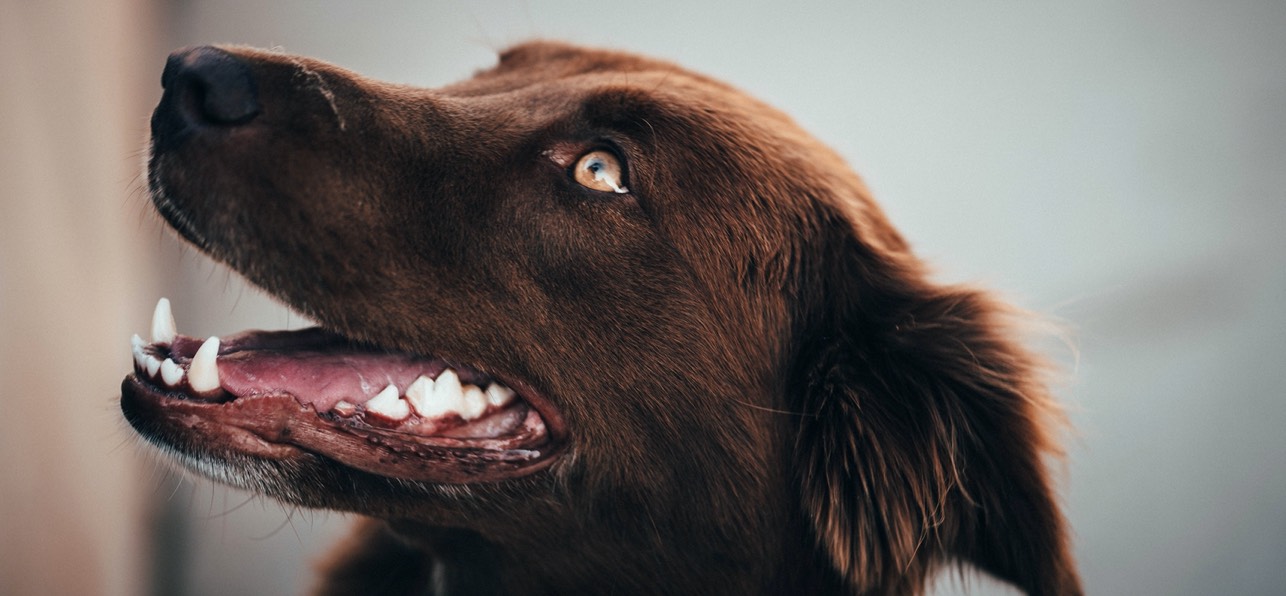What is dental disease in dogs?
Dogs don’t suffer from serious tooth decay as humans do, however, the vast majority of dog breeds over the age of three do have a dental disease (some more serious than others).
Dental disease comes in four stages. Typically, the dental disease starts with the buildup of plaque and tartar on the dog's mouth which can then lead to inflamed gums. Similar to humans, this condition is called gingivitis. If gingivitis is left untreated it can lead to more serious health issues such as periodontal disease. This can also include the loss of soft tissue and bone around the teeth. Serious gum disease can lead to infections that can affect the dog's other organs.
What are the signs of dental disease in dogs?
The usual signs to look out for are:
- Paw rubbing of their mouths
- Fussy with certain types of food
- Loss of interest in playing or chewing their toys
- Pain when trying to examine their mouths
- Salivating
- Blood in their mouth or food bowl
More serious signs to look out for are:
- Smelly breath
- Red, swollen gums
- Yellow or brown teeth
Periodontal disease in dogs
This disease is associated with the inflammation of the periodontium (tissues surrounding the tooth). Four tissues make the periodontium which are the gingiva, cementum (this covers the surface of the root) the ligament (this attaches the tooth root to the bone) and lastly the alveolar bone. If gingivitis is left untreated the infection can spread into the socket of the tooth and destroy the bone, this will result in the tooth becoming loose and falling out.
How does tartar happen and is it serious?
Just like humans, the mouth is full of thousands of bacteria and perform a great building ground for many to multiply and cause health issues. Tartar forms when the bacteria multiply on the surface of the tooth and this forms an invisible layer which is most commonly known as plaque.
Plaque can be removed naturally by the dog's tongue or dental chew sticks. Unfortunately, more is needed to remove a buildup of plaque as if it is left untreated, it can build up and form a layer of tartar which is hard to remove.
How to prevent plaque and tartar build-up
The best way to prevent the build-up of plaque and tartar is to brush your dog's teeth once a day using toothpaste specifically for dogs that are safe to use.
You can also use dog chewing toys designed to help minimise the build-up of plaque and tartar. There is also specifically designed food that can help prevent the the build-up of plaque and tartar. Many pet food suppliers have developed special dental diets that can reduce the flare-up of gum disease.
However, if your dog has an existing build-up of tartar on their teeth they should be taken to the vets for a dental examination and your vet can discuss the option of dental treatment for the removal of the tartar build-up.
Is my dog likely to get dental disease?
Dental disease can affect any dog breed of any age, however, it is more common in older dogs.
Some dog breeds are predisposed to getting dental disease because of the shape of their mouths and these are;
- Greyhound & Whippet
- Yorkshire terriers
- Cavalier King Charles Spaniel
- Flat face breeds such as Bulldogs, Pugs & Shih Tzu
Lastly, your dog's diet can play a huge part in whether they’re susceptible to getting dental disease. It is thought that feeding dry food is better for your dog and their teeth because the dried kibbles physically remove some of the plaque when your dog is chewing. Please note this can not be substituted for brushing your dog's teeth.




